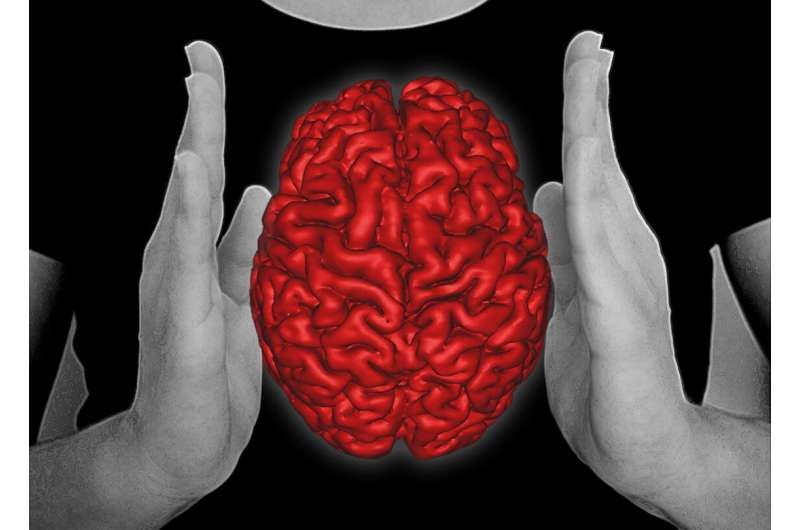Could a Neanderthal meditate?
Emiliano Bruner, a paleoneurologist at the Centro Nacional de Investigación sobre la Evolución Humana (CENIEH), has led a study published in the journal Intelligence on how attention evolved in the human genus, which analyzes the paleontological and archaeological evidence that might shed light on the attentional capacity of extinct hominins.
This work proposes evolutionary changes in attention associated with the origin of the human genus and in Neanderthals, although only with Homo sapiens did this cognitive capacity attain a complexity which would profoundly revolutionize the behavior, technological complexity, and social structure of the species.
At the paleoneurological level, it assesses the role played by the evolution of the parietal lobes in attention, which can be defined as the capacity to maintain the cognitive process centered on one objective over time and in space in the face of internal and external distractions. At the archaeological level, the study evaluates information about the lithic industry and ecology of extinct hominins, considering those behaviors which could suggest evolutionary changes in working memory and visuospatial capacities.
The parietal lobes, which are a fundamental part of the attentional network, are also involved with the capacity for visual imagination associated to our particular skill for projection in the past (memories) and future (prediction). A mismatch between this projection capacity and the attentional network can affect the balance between the perception of the present moment and internal ruminations, which are the main causes of the high prevalence of stress, anxiety, and depression in human societies.
Mindfulness
Meditation is a form of cognitive training for the perceptual and attentional system and, over recent years, it has been widely studied in neuroscience because of its effects on the ability to direct and maintain the attention on the present moment.
In fact, the best-known form of meditation in Western society, mindfulness, is sometimes known as bare attention. “Considering the close relationship between attentional capacity and meditation, and to set the cat among the pigeons, it occurred to us to investigate whether extinct hominins might have been capable of practicing the selection and maintenance of mental stimuli,” says Bruner.
Despite the importance of attention in all cognitive processes, this ability had not hitherto been looked at from a paleoanthropological perspective before this study, which was conducted in collaboration with Roberto Colom, of the Psychology Department at the Universidad Autónoma de Madrid.
Anthropology and neuropsychology to study how the brain evolved
Emiliano Bruner et al, Can a Neandertal meditate? An evolutionary view of attention as a core component of general intelligence, Intelligence (2022). DOI: 10.1016/j.intell.2022.101668
Provided by
CENIEH
Citation:
Could a Neanderthal meditate? (2022, June 30)
retrieved 30 June 2022
from https://phys.org/news/2022-06-neanderthal-meditate.html
This document is subject to copyright. Apart from any fair dealing for the purpose of private study or research, no
part may be reproduced without the written permission. The content is provided for information purposes only.

Emiliano Bruner, a paleoneurologist at the Centro Nacional de Investigación sobre la Evolución Humana (CENIEH), has led a study published in the journal Intelligence on how attention evolved in the human genus, which analyzes the paleontological and archaeological evidence that might shed light on the attentional capacity of extinct hominins.
This work proposes evolutionary changes in attention associated with the origin of the human genus and in Neanderthals, although only with Homo sapiens did this cognitive capacity attain a complexity which would profoundly revolutionize the behavior, technological complexity, and social structure of the species.
At the paleoneurological level, it assesses the role played by the evolution of the parietal lobes in attention, which can be defined as the capacity to maintain the cognitive process centered on one objective over time and in space in the face of internal and external distractions. At the archaeological level, the study evaluates information about the lithic industry and ecology of extinct hominins, considering those behaviors which could suggest evolutionary changes in working memory and visuospatial capacities.
The parietal lobes, which are a fundamental part of the attentional network, are also involved with the capacity for visual imagination associated to our particular skill for projection in the past (memories) and future (prediction). A mismatch between this projection capacity and the attentional network can affect the balance between the perception of the present moment and internal ruminations, which are the main causes of the high prevalence of stress, anxiety, and depression in human societies.
Mindfulness
Meditation is a form of cognitive training for the perceptual and attentional system and, over recent years, it has been widely studied in neuroscience because of its effects on the ability to direct and maintain the attention on the present moment.
In fact, the best-known form of meditation in Western society, mindfulness, is sometimes known as bare attention. “Considering the close relationship between attentional capacity and meditation, and to set the cat among the pigeons, it occurred to us to investigate whether extinct hominins might have been capable of practicing the selection and maintenance of mental stimuli,” says Bruner.
Despite the importance of attention in all cognitive processes, this ability had not hitherto been looked at from a paleoanthropological perspective before this study, which was conducted in collaboration with Roberto Colom, of the Psychology Department at the Universidad Autónoma de Madrid.
Anthropology and neuropsychology to study how the brain evolved
Emiliano Bruner et al, Can a Neandertal meditate? An evolutionary view of attention as a core component of general intelligence, Intelligence (2022). DOI: 10.1016/j.intell.2022.101668
Provided by
CENIEH
Citation:
Could a Neanderthal meditate? (2022, June 30)
retrieved 30 June 2022
from https://phys.org/news/2022-06-neanderthal-meditate.html
This document is subject to copyright. Apart from any fair dealing for the purpose of private study or research, no
part may be reproduced without the written permission. The content is provided for information purposes only.
